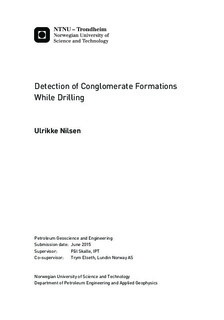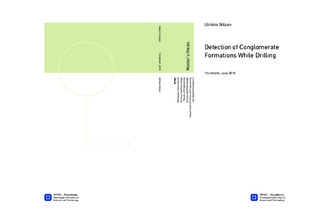| dc.description.abstract | The high drilling cost of today s oil and gas industry makes drilling optimization highly desirable. Lost time during drilling caused by unforeseen challenges is common, and increases well cost. The elimination of such challenges enables a large cost-saving potential.
Several drilling challenges are associated with interaction with hard formations. Large variations in mechanical properties within a formation, often caused by harder stringers or boulders, can cause drilling challenges like buckling, dogleg generation, washouts and vibration. These challenges are all associated with extensive bit war, BHA failure and slow penetration rate, resulting in lost time.
The appraisal drilling campaign on the Lundin Norway AS operated field Edvard Grieg have shown that large granitic boulders within conglomerate formations cause extensive bit wear, resulting in slow penetration rate and lost time. A data-agent developed to detect these conglomerate formations have been proposed in present master thesis.
The data-agent imports the relevant drilling parameters weight on bit (WOB), rotary speed (RPM) and penetration rate (ROP) from acquired drilling data. A simplified version of the mathematical model of penetration rate, proposed by Bourgoyne and Young (1986), have been used to calculate drillability. Further, formation hardness, the inverse of drillability, was calculated and displayed as a plot of formation hardness against depth. Some functional relations of the original penetration rate model were neglected, assuming they had negligible effect on the penetration rate over short spans. Both an average value of empirical exponents and the use of specific exponents for soft and hard formations, determined continuously by a moving average calculation, have been used in the data-agent.
Results from the data-agent showed few tendencies in detecting conglomerate formations between six Edvard Grieg wells. The expected difference in formation hardness between sandstone and conglomerate formations was not proven. The results concluded that the model was not able to detect conglomerate formations. | |

